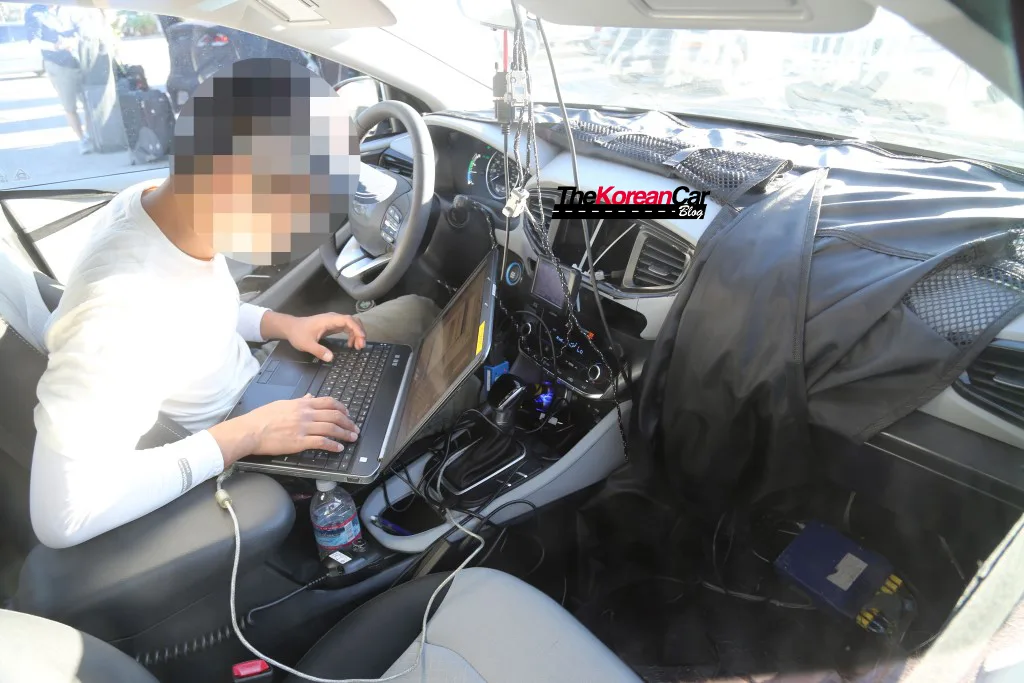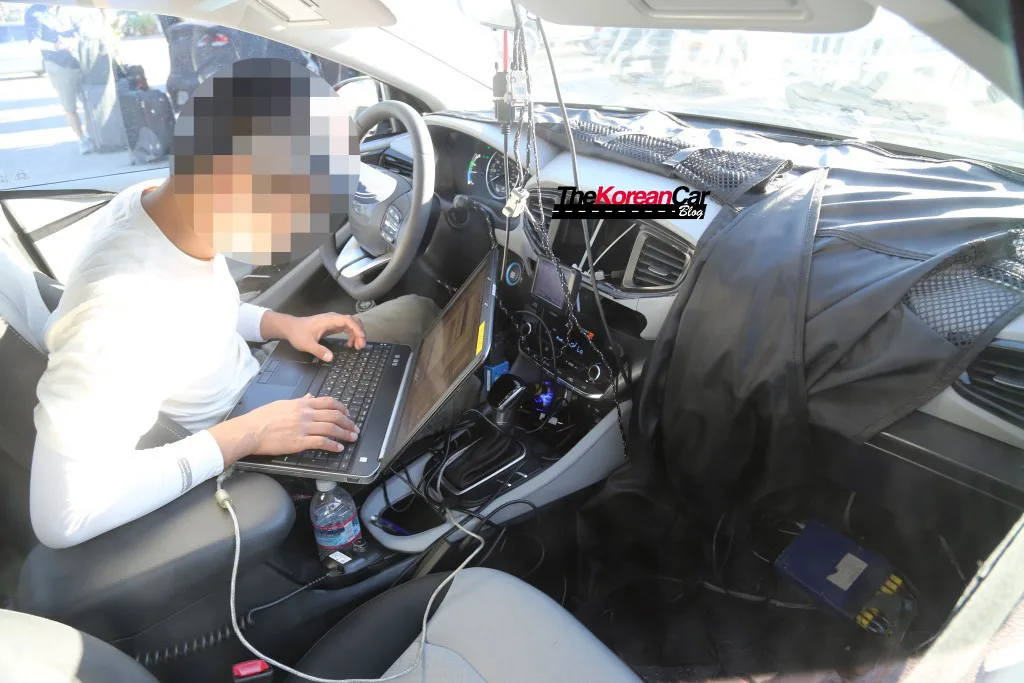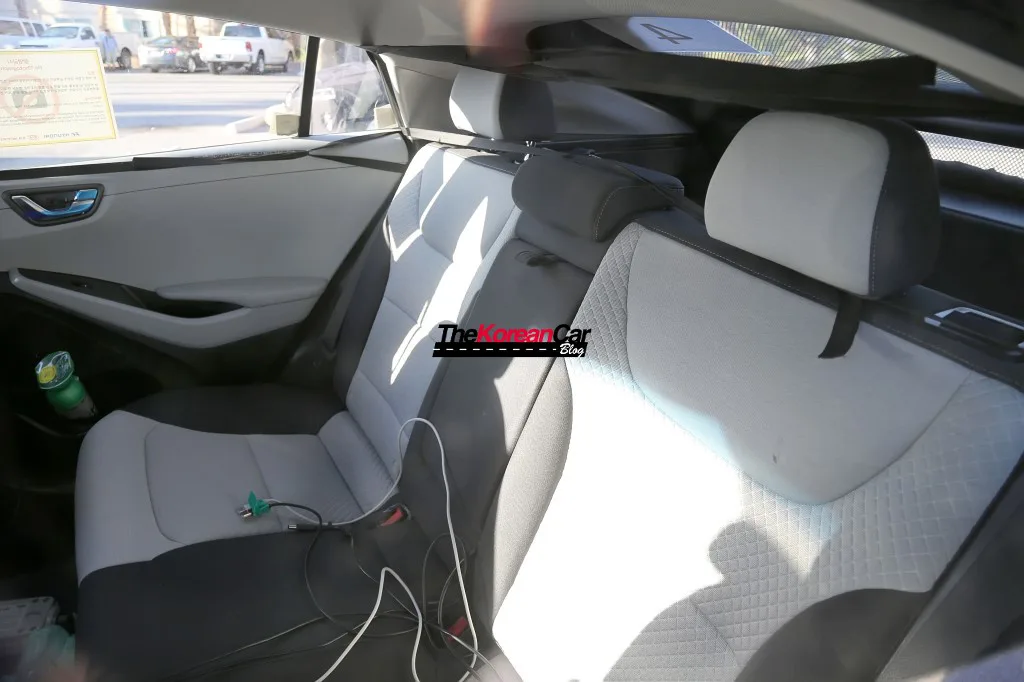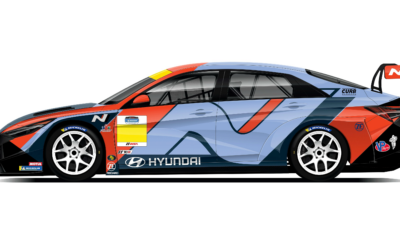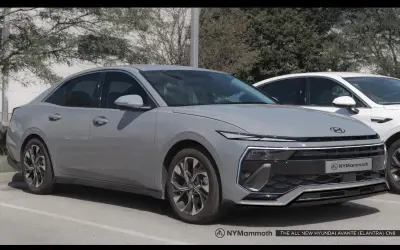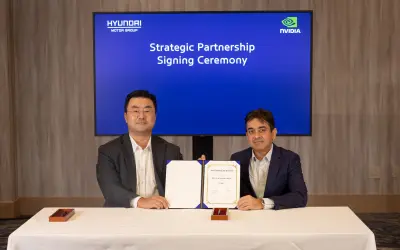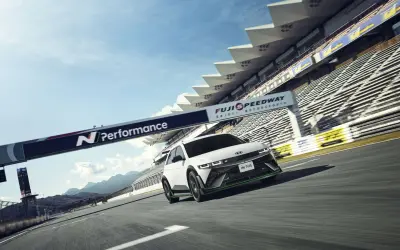We’ve got the latest and best pictures yet of Hyundai Prius Killer, because we caught a prototype during some hot weather testing in the US. The engineers opened the boot for the first time, so that you can see a lot of the rear design for the first time.
[ads id=”0″ style=”float:left;padding:9px;”]We’ve also managed to get photographs of the prototype with its doors open, so that you can see the undisguised door interior.
This is also the first and best look into the interior with his undisguised dashboard.
Hyundai may have been hoping to slip this prototype into the Arctic Circle testing grounds under the cover of darkness, but we still spied it on the top rack of this auto hauler.
The elevated position of this test car allowed us a good look at the underbody of the car where we get peaks at the orange, high voltage cables, and a sticker on the suspension arms that says “AE HEV.”
As you can see, the sloped roofline clearly has a negative impact on headroom.
“AE” represents the program code for this car, and “HEV” is, of course, hybrid electric vehicle. Overall, Hyundai’s first dedicated gas-electric hybrid looks to resemble the Prius quite a bit, with a profile that looks all too familiar.
Up front, we can see horizontal grille slats, headlights with blue accents, and possibly some LED running lights showing through the camouflage below the main headlight cluster.
This Hyundai Prius Killer will start production in South Korea in the second half of 2016, and will ride on the next-generation Elantra chassis.
It will first be offered in a 5-door hatchback configuration, but other body styles could follow to match Toyota’s Prius line-up, with a compact car and a MPV.
Under the hood will be a parallel powertrain setup, with a 1.6-liter gasoline engine, and electric motor being fed by a lithium-ion LG Chem battery pack. A plug-in hybrid version is also rumored to be offered 12-18 months after the initial launch.
Photo Source courtesy of SB-MEDIEN

